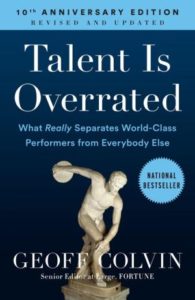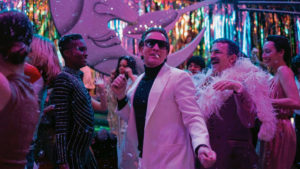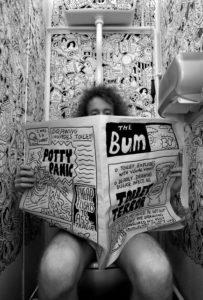Ready, Fire, Aim in Action
My book Ready, Fire, Aim, which was published in 2008, made it to the Wall Street Journal and Business Week bestseller lists. John Wiley, the publisher, sold out several editions. It was successful, I think, because it explained, in the simplest terms, my beliefs about how to start and grow a successful business. The title expressed my idea: If you want to start a business, don’t waste time trying to get everything right. There are only a few things that really matter. Get those things “Ready” as soon as you can. Then pull the trigger. Once the cash starts flowing, you’ll be able to make the adjustments you need to make. For every business idea that fails because of poor planning, nine never get started because of too much planning.
That’s my entrepreneurial philosophy. There are others, I’m sure, that work as well. But for me – for my skillset and personality – Ready, Fire, Aim is not just the best way but the only way to go.
I’m revising Ready, Fire, Aim now for a second, 15-year anniversary edition. Much of it is the same, but I’ve added lots more that I’ve learned since 2008. One chapter, which I’m excerpting here, is about how I use the same Ready, Fire, Aim approach in other areas of my life. Today, I want to tell you about three of them: making a movie, producing a record album, and developing a botanical garden.
My First Ready, Fire, Aim Attempts at Filmmaking
I always wanted to make movies. For many years, I did nothing but talk about that dream. But soon after I started writing articles for Early to Rise in 2000, I decided to start practicing what I was preaching in them.
For openers, I wanted to make a 30-minute documentary related to my involvement with Jiu Jitsu. I also had an idea in the back of my head for a feature-length film.
So I was Ready. And I Fired.
For the documentary, I partnered with a friend who, like me, was a Jiu Jitsu enthusiast and also had a desire to make movies. Paul had more free time, so the deal was that he would do the groundwork – setting up casting calls, arranging for equipment, and figuring out (very roughly) what our needs would be in terms of people and money – and we’d hire a professional production company to do the actual shooting.
The project officially began with a Saturday morning casting call for the three actors we needed. When I got there, 150 people were waiting to be interviewed. It took us most of the day to make our selections, and by Monday, Paul was working with our production company, following a quick-and-dirty storyline I had written on Sunday.
For two weeks, I spent every evening with Paul, reviewing the footage that had been shot and tweaking our plans as we went. At the end of that time, we had a documentary in the can. It wasn’t great, but it was done.
About a year later, Paul and I got together to turn my more ambitious dream – a feature-length film – into reality.
We had learned something about filmmaking from our documentary, but this time we were going to do the production work ourselves. Again, Paul did all the preliminary stuff, and I got to work on the script.
Paul and I took turns directing the actors. One of my sons did the camera work. Another son did the lighting. Two other young people – Ben, a friend of one of my sons, and Annabelle, the daughter of one of my friends – took care of such things such as sets, costumes, and charting continuity.
We shot half of the movie outdoors and the other half in a friend’s apartment, cleaning up at the end of every day so the place wouldn’t be in shambles when she got home from work.
The truth was that none of us – except for some of the actors – knew what the hell we were doing. But that didn’t stop us from doing it. Paul got us Ready, and we Fired. Had we not been willing to do that, I am 100 percent sure the movie would never have been made.
When the rough cut was done, I held a very private screening – just my youngest son, Michael, and two of his cousins. They watched it intently. And when it was over, I got the following three pithy critiques…
Michael: “On a scale of 1 to 10, Dad, I’d have to give that a zero.”
Eamon: “Let me put it to you this way, Uncle Mark… You will never be able to call another movie bad.”
Justin: “That’s not true. You will be able to say other films are bad. You’ll just have to say that yours was worse.”
“Oh well,” I thought, “who cares? I made a movie. And that’s something only one out of a thousand people who have that dream can say.”
Several years after that, I was inspired to make a documentary about an acquaintance of mine, Herschel Gordon Lewis. Herschel was a copywriter, but he had also been a filmmaker. And not just any filmmaker, but a legend in a certain genre that was popular in the 1970s and 1980s. He was known as The Godfather of Gore.
He agreed to do my documentary, but only if I helped him make a feature film that he had in mind. Three months later, we were shooting both movies.
The quality of the feature was classic Herschel Gordon Lewis – i.e., kitschy bad. The quality of the documentary was not bad. They both toured the horror-and-gore film festivals and even won some awards.
Several years after that, I made another feature film. It was a coming-of-age story about three young men that open a bar in a bad neighborhood. It was, as you probably guessed, semi-autobiographical. It was in several ways more important to me than my first two movies, and was a considerably larger endeavor. At one time, we had 100 people on the set. But we got it done on time and on budget. And six months later, it was making its way through the film festival circuit. It actually debuted in Liverpool and won best picture there!
I don’t consider myself to be a filmmaker. Nor do I believe that any of the films I’ve made is very good. But because of Ready, Fire, Aim, I was able to make half a dozen movies in a 10-year period, each a bit better than the previous one, and do it while I was still busy with my main career.
Using Ready, Fire, Aim to Produce a Record Album
I applied Ready, Fire, Aim to another “artistic” project, too: producing a record album. I got this idea after meeting Joselito, a guitarist and singer who entertains people at Rancho Santana, our resort development in Nicaragua. (In my untutored opinion, Joselito sings Spanish ballads better than anybody on the planet.) After having a few too many margaritas at the bar one night, I promised to bring him to New York and make a recording of his music. When I came back a few days later, sober and preoccupied with property-development issues, he reminded me of my promise.
It took six months to secure a visa for Joselito to come to New York, but finding a partner for the project was easy. My son was starting his career in New York as a music producer and composer.
I blocked out four days on my calendar, and flew Joselito from Managua to the Big Apple. He had never been on an airplane before, had never been in a high-rise hotel, had never been outside his country, and had never made a recording. Spending those four days with him and my son was an extraordinary experience. And because my son actually knew how to make a good recording, we succeeded in producing an album I’m proud of.
That’s the great thing about using Ready, Fire, Aim to go after personal goals. You don’t have to worry about making a profit on your projects, as you do in business. You don’t even have to try to achieve some level of quality if you don’t want to. My goal in making my movies and that one album was simply to make them.
Using Ready, Fire, Aim to Create a Botanical Garden
Sometime during the 40+ years that I’ve lived in Florida, I developed an interest in palm trees. One of the first things I learned, which surprised me, was that there are more than 2,500 species of palm trees, yet only 13 of them are indigenous to Florida.
That bit of data germinated in my mind. And then one day I mentioned to a real estate broker I work with that I had developed a fantasy of having my own palm tree botanical garden.
She jumped on it. And within a few months, she had found a 5-acre parcel of land with a small lake about a half-hour west of my house in Delray Beach.
The property was in such bad shape that it was selling for only $100,000 an acre, well below the going rate for the area.
I was Ready, and I Fired.
I started the acquisition process. And while that was going on, I was at the property every day, meeting with consultants, talking about my ideas, asking advice. By the time we closed on the property a month later, I had figured out the layout, including the principal planting areas, the walking paths, and where on the lake I’d locate a weekend cottage for my family.
The day after we closed, I had a dozen workers hauling away junk, clearing debris, deracinating invasive plants, and installing an irrigation system. A week later, I had a team dredging the lake.
Before the end of that first year, I had a 1,500-square-foot cottage on a lake that was clean and pretty, and about four acres of land with about 80 species of newly planted palm trees.
My little garden was looking pretty good. And then I met Paul Craft.
I’d been reading every book on palm trees I could get my hands on – and Paul was not only the author of several of them, he was cited as an expert in many of the others. I looked him up and discovered that he lived and worked in Florida, about 90 minutes north of my garden. I contacted him and invited him to see what I was doing.
I expected him to be impressed. Instead, he walked me around the garden, pointing out all of the amateurish mistakes I had made. But that didn’t turn me off. On the contrary, I knew that I had found the man who could help me with the Aiming.
A key element to making Ready, Fire, Aim work is that you have to know beforehand that, during the Aiming stage, you will be revising and sometimes even negating things you’ve already done. I was used to that. In fact, I was looking forward to it. Because for me, that is the best part of any project. It’s the time when you can go from kinda good to quite good and sometimes even to amazing.
So Paul began consulting for us. And in the years that have transpired since then, my little 5-acre startup fantasy grew to a 20-acre botanical garden that has more species of palm trees than any other botanical garden in the continental US.
And, as I write, this, we are just getting started. We’ve purchased an additional 5 acres, and we are bidding on another 5. If we can get those two this year, we’ll go for a final 10 acres next year.
If You Have a Personal Goal…
If you want to become something like a filmmaker or a writer or a painter, you should begin filming or writing or painting the moment you feel Ready. You don’t want to wait until you know a lot about how to film or write or paint. Because if you do, chances are you will never be what you want to be.
Do this now. Make a list of everything you have ever wanted to do or become. Arrange that list according to what is most important to you. Narrow your choices to three. Then pick one of the three.
Promise yourself that that goal, and only that goal, will be your top priority for the next 365 days. Acknowledge that everything else will be secondary.
Then make an outline of exactly what you have to do to become what you want to become. Don’t worry about being good at it. Don’t worry about being recognized. Do it because you have always wanted to do it… and because time is running out.








